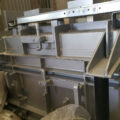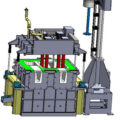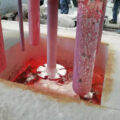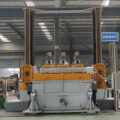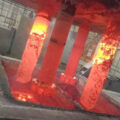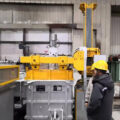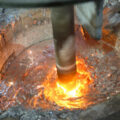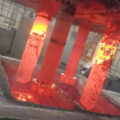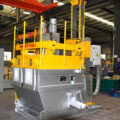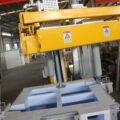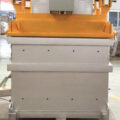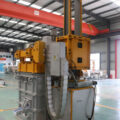The online aluminium degassing system is mainly used in the processing of molten aluminum, and it is expected to remove gases and other impurities from the molten aluminum before further processing and depending on the specific process.

If hydrogen remains in the aluminum during the casting process, the escape of hydrogen from the solution may cause any one or more casting problems, such as twisting, peeling, blistering, or even cracking. Generally, hydrogen is removed from molten aluminum by introducing an inert gas through the molten metal. The inert gases that can be used include argon or nitrogen.
In addition to removing hydrogen through the use of inert gases, it is often desirable to remove other impurities during the refining process, and this removal may also occur during this degassing process. For example, adding a smaller amount of chlorine to an inert gas can remove various inclusions and alkali metal impurities in a relatively effective manner.
The inclusions in the molten aluminum may come from anyone or more different sources during the smelting process, and the impurities in the molten metal furnace may also come from deliberately added materials. Failure to adequately remove inclusions may cause tearing and surface defects of the rolled aluminum sheet, pinholes, and increase die to wear during the extrusion process. The ceramic foam filter filtration of molten aluminum will generally be used to further reduce inclusions in the molten metal.
The online aluminium degassing system usually introduces inert gas into the molten metal through a large number of bubbles, and can shear and dispersed by rotor into the molten metal, so that the inert gas saturates the molten metal.
Generally, an inert gas is introduced into the molten metal near the bottom, and bubbles are dispersed and rise to the surface of the melt, thereby desorbing the dissolved hydrogen in the process. The addition of chlorine gas may help break the bond between the molten aluminum and any unwetted inclusions in the molten aluminum, making it easier for the inclusions to attach to the rising surface. The bubbles are floated or lifted to the molten surface of molten aluminum. An additional amount of chlorine may be added to the inert gas to chemically react with the incoming alkali metal to form a chloride salt, which also floats on the surface of the molten aluminum or the molten surface.


